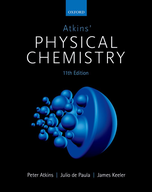?(Continues from P16D.6) Now suppose that the overpotential is in the high overpotential
Chapter 19, Problem P19D.7(choose chapter or problem)
(Continues from Problem P16D.6) Now suppose that the overpotential is in the high overpotential region at all times even though it is oscillating, and that it takes the form of a sawtooth between varying linearly between \(\eta_{-}\) and \(\eta_{+}\) around an average of \(\eta_{0}\), but in such a way that \(\eta\) is always positive. Derive an expression for the variation in the current density across the interface; take \(\alpha=\frac{1}{2}\) .
Text Transcription:
eta_-
eta_+
eta_0
eta
alpha=1/2
Unfortunately, we don't have that question answered yet. But you can get it answered in just 5 hours by Logging in or Becoming a subscriber.
Becoming a subscriber
Or look for another answer
